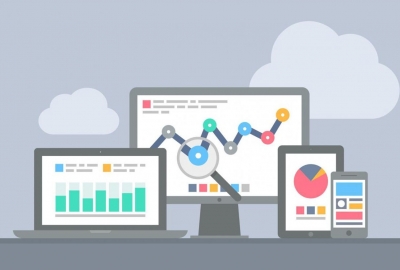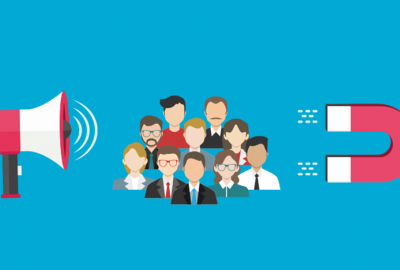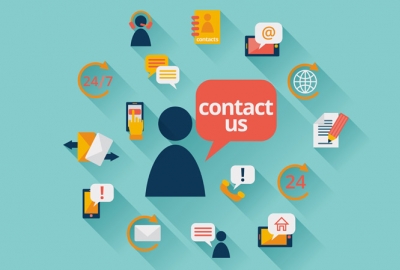Blog
 19:07 | Jan 04 , 2018 | Arthur Dent -Blog
19:07 | Jan 04 , 2018 | Arthur Dent -Blog
Discovery phase will improve your web design projects
What do I use the Discovery Phase for?
- To dig deeper and find out what your client really needs vs what they say they need.
You will find that most clients talk about the features they want without referring to why they want these features. That is because they already brainstormed and looked at a lot of competitors and want to do “…something like that.”
Before you spend their money to “build something” per their request, you have to find out if you are building the right thing. For me this became a moral imperative, just because the agency business model is to charge for time spent doing design and development for clients, it doesn’t mean that you’ll just blindly build whatever you’re asked for. You have to do your best to try to build the right thing. Otherwise, I would advise you to disclose this to your clients. For example, “Mrs. Client, I can build this website for you, but I don’t really know whether this will work for you or not.” It might be early in your practice and you might not be comfortable doing this, but it’s a choice between saying it at the beginning or having it come back to you in the form of, “What you built for us is not working well. Why did you do that? Did you not know that it wasn’t going to work? You suck!”
- To find out how and with whom they are doing IT now.
And by that I mean, what do their current web / IT (Information Technologies) / Marketing efforts look like. What other partners or vendors are involved. The “lay of the land” so to speak. This is when you ask questions about how they are doing things now. To not only see how the car looks on the surface but also to look under the hood and see what kind of engine the car has. Is this an IT-dominated organization or is it Marketing dominated? DoIT and Marketing get along? Who are the key stakeholders? What are their interests? Will you be interacting with other vendors? If you don’t ask these questions you are walking into a “Wild West” scenario and you don’t know what challenges lay hidden behind that cactus up ahead.
- To work together to define the goals for the project.
What are we trying to accomplish? Why is the organization embarking on this effort? This is often called “The Business Driver”. For example, it can be an upcoming tradeshow or it can be pressure from upper management to modernize or revenue has decreased. It can be all three of those. Once you know “why” they are embarking on this journey, work together to clearly define the destination, to set the broader “global” business objective. Unless both partners (vendor and client) worked together to set the destination or goal for the project, one or both partners will feel like their interests are not expressed. It is critical that once you know the destination, you assume the role of guide, have full control of the map (process), and both partners know where you are at all times. Without a destination and without a roadmap your project will be wrought with wrong turns, the stress of not knowing “where we are” and other challenges. If this sounds too much like a marriage it is because it is exactly like a marriage. You have to work at IT to be successful.
- To create a roadmap for the project.
Now that you know the destination you need to know exactly how you are going to get there. Well not exactly. Here is the catch. In the 20th century, once you set the destination and you plotted a course you then proceed to try to keep that course. The problem is that with a “fixed roadmap” on a three-month journey you don’t know what challenges will occur in route. A boulder might fall on your trail and you can’t pass. You might get robbed by bandits who take your mule. Who knows?
But the point is that in software (we are assuming you are building a website here) like in the Wild West, it’s hard to predict conditions in the future.
So how do you map out your project to address the possible bandits and boulders? Set rules for the journey. You get everyone together and you say; “Here is our destination and here is why we are going there. We have some idea of how we are going to get there, but some conditions will change. So you are all on your own. We will check in every 10 miles at these locations. For those of you who are not close to the locations, you can use your Walkie-Talkies and call in” (these cowboys have radios, Marty McFly brought them from the future). So now you have cowboys and cowgirls who are smart and independent, all going towards the same destination and checking in regularly. It is not a “fixed plan” but more of a framework for planning and checking in during the journey. If you had two teams of cowboys on the same journey, which do you think would get to the destination faster: the ones that have a fixed plan and work to remove the boulder from their path (as not to veer from their plan) or the ones that have an adaptable plan and move around the boulder or take a different route completely that might be shorter?
- To get to know the people.
It shouldn’t surprise you that the most important factor in a project is whether you like working with the people or not. The Discovery Phase is an opportunity to understand their individual needs and how best you can tailor your services to the individuals in the organization. Each person and department is going to have a different need. Each of the individuals also has general career goals and needs. I strongly believe that the best web designers, web developers, IT consultants or whatever you want to call yourself are those who understand the individual needs of team members and aim to help both the team members individually and the group collectively to be successful and therefore forward the mission of the company or organization as a whole. If you think your client is a company or a product, you are wrong. The company is people, you are not building a website for them, you are building a website with them. So what is more important? The technical details of the project or whether you feel that this is a person (team) that you can ride with through the peaks and valleys of your journey, taking on countless challenges together and hopefully riding into the sunset together?




